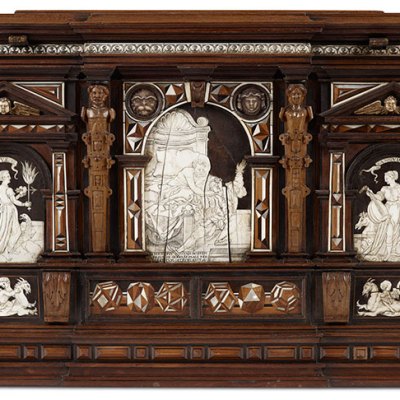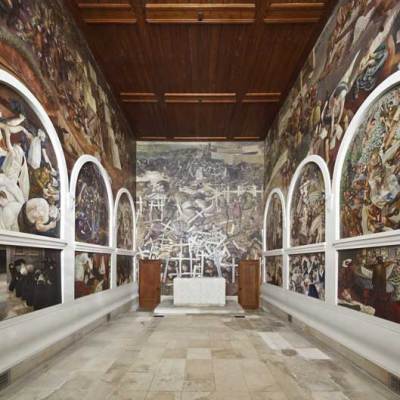I remember exactly where and when I decided to write a book about the moon: lying on my back in a dentist’s chair, waiting for the anaesthetic to take effect. To distract his patients, the dentist had tacked a poster to the ceiling: a NASA image of the earth from space at night. I was struck by the way so much of the northern hemisphere glitters with artificial light, cutting us off from the experience of night as our forefathers knew it and severing a connection with the cycles of the moon that has existed since the beginning of human history. This radical shift is relatively recent: the roll-out of electric illumination in public spaces has occurred over the past 150 years or so. It was the relegation of the moon from a central place in human culture to that of washed-out bystander that made we want to write about it.
Researching Nocturne (2011), I became for a while a creature of the night; a taker of nocturnal walks and a specialist in artists and writers interested in lunar themes. I travelled to the desert in Arizona in search of a place without light pollution and attended the autumn moon festival at a temple in Japan. But, the book written, I moved on to other projects, the way writers do. It wasn’t until this year, the 50th anniversary of the Apollo 11 mission, that the moon returned both to the forefront of my mind and the centre of global attention. It’s been fascinating to see curators around the world grapple with the subject, to observe key works enter Earth-orbits of their own between venues of lunar-themed shows, and to encounter works I hadn’t been aware of (or that hadn’t been made) when I embarked on my own voyage of discovery.
Stoned Moon Drawing (1969), Robert Rauschenberg. Robert Rauschenberg Foundation. Photo: © Robert Rauschenberg Foundation/VAGA at ARS, NY and DACS, London 2019

The first of these, brought to my attention by an exhibition at Louisiana Museum of Modern Art in Denmark, had been hiding in plain sight. Robert Rauschenberg attended the launch of Apollo 11 and made a series of lithographs inspired by it titled Stoned Moon (1969–70), which have featured in several exhibitions this year, including the one in Denmark. They led me to another work at the Rauschenberg Foundation called Stoned Moon Drawing (1969), a collage related to the series. It combines mediasourced images and urgent, capitalised texts, together providing an eyewitness account of the build-up to and lift-off of Apollo 11, a drama counterpointed by photographs of a busy lithography studio. The huge team of some 400,000 people engaged in the moon mission, Rauschenberg seems to imply, is no more or less pioneering than the collaborative process of making art. A black-and-white photograph of a printmaker’s ink-stained hands lies next to an image of the blue-tinged, smoke-wreathed Saturn V rocket. ‘THE BIRD’S NEST BLOOMED WITH FIRE AND CLOUDS,’ the text says of the moment of ignition. ‘SOFTLY LARGELY SLOWLY SILENTLY APOLLO 11 STARTED TO MOVE UP. THEN IT ROSE BEING LIFTED ON LIGHT.’ Underlining the momentous importance of the moment he is witnessing, Rauschenberg states: ‘NOTHING WILL ALREADY BE THE SAME.’
More discoveries were to be made at an exhibition marking the anniversary at Kunsthaus Zürich. A section called ‘Moonlight and -shadow’ included 19th-century masters of the moonlit landscape such as Johan Christian Dahl, as well as contemporary reworkings of the theme by Bulgarian artist Nedko Solakov: six paintings from his series Studies for Romantic Landscapes with Missing Parts (and Tips for the Average Global Citizen) (2000) are here. Friedrich Nerly’s Piazzetta in Venice by Moonlight (c. 1870) was exhibited alongside Japanese artist Hiroyuki Masuyama’s version of the same image from 2018. Hiroyuki meticulously recreates famous works from the past by visiting the sites where they were made and taking hundreds of photographs, which he then reassembles in his Berlin studio into LED lightboxes. Because of the preservation of Venice’s architectural landmarks, the images are astonishingly alike, although Hiroyuki’s work reveals that Nerly has increased the space between the Lion of Venice and the distant bell tower of San Giorgio Maggiore to admit picturesque shipping in full sail. In both works the full moon appears around the edge of the Doge’s Palace, silvering the clouds that hang above the lagoon. In Nerly’s painting, its light transports those strolling the piazza from the late 19th century to a much earlier time – is that man wearing a sword? – yet they share the ambiguous space with Hiroyuki’s tourists, wrapped in puffa jackets against the night. One of them stands alone and raises an iPhone to take an image within the image: a 21st-century version of the contemplative, solitary figures that gaze over moonlit landscapes in the paintings of Caspar David Friedrich.
The Piazzetta in Venice by Moonlight (by Friedrich Nerly, 1838) (2018), Hiroyuki Masuyama. Angermuseum, Erfurt. Photo: Hiroyuki Masuyama, © the artist

Is it possible to rediscover a moon, still potent and mysterious, in the post-Apollo age? That was my intention when I wrote Nocturne. Friedrich’s moon, of course, bore no footprints – let alone the abandoned detritus of American adventuring, from rovers to defecation collection bags. Contemporary artist Katie Paterson went some way to bridge the gap between our diminished satellite and the moon of the Romantic tradition. For her piece Earth-Moon-Earth (Moonlight Sonata Reflected from the Surface of the Moon) (2007), she converted Beethoven’s sonata into Morse code and bounced it off the lunar surface; the music returned to be played on an automated piano in a gallery, punctuated by haunting pauses and hesitations caused by the moon’s irregularities – a lunar remix engineered by the object of our ceaseless observation.
Yet it is Rauschenberg in Stoned Moon Drawing who comes closest to the awe, terror and transcendence experienced by 18th- and 19th-century connoisseurs of the sublime. The Apollo 11 astronauts left the ground with ‘A SOUND THAT BECAME YOUR BODY’, he writes. ‘THERE WAS NO INSIDE, NO OUT. POWER OVER POWER JOY PAIN ECSTASY […] APOLLO 11 WAS AIRBORNE, PULLING EVERYONE’S SPIRITS WITH IT.’
From the June 2019 issue of Apollo. Preview and subscribe here.


